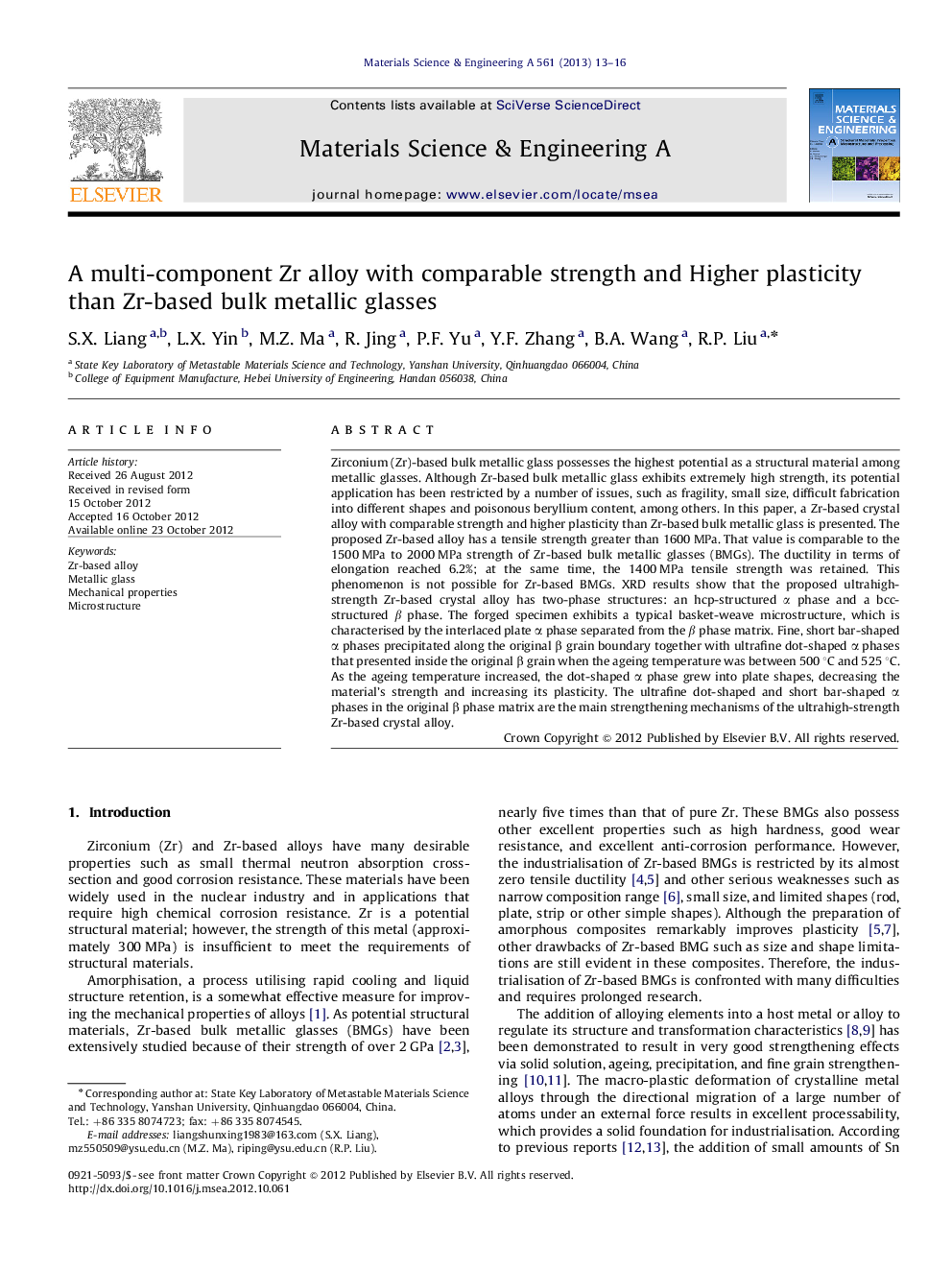| Article ID | Journal | Published Year | Pages | File Type |
|---|---|---|---|---|
| 1576454 | Materials Science and Engineering: A | 2013 | 4 Pages |
Zirconium (Zr)-based bulk metallic glass possesses the highest potential as a structural material among metallic glasses. Although Zr-based bulk metallic glass exhibits extremely high strength, its potential application has been restricted by a number of issues, such as fragility, small size, difficult fabrication into different shapes and poisonous beryllium content, among others. In this paper, a Zr-based crystal alloy with comparable strength and higher plasticity than Zr-based bulk metallic glass is presented. The proposed Zr-based alloy has a tensile strength greater than 1600 MPa. That value is comparable to the 1500 MPa to 2000 MPa strength of Zr-based bulk metallic glasses (BMGs). The ductility in terms of elongation reached 6.2%; at the same time, the 1400 MPa tensile strength was retained. This phenomenon is not possible for Zr-based BMGs. XRD results show that the proposed ultrahigh-strength Zr-based crystal alloy has two-phase structures: an hcp-structured α phase and a bcc-structured β phase. The forged specimen exhibits a typical basket-weave microstructure, which is characterised by the interlaced plate α phase separated from the β phase matrix. Fine, short bar-shaped α phases precipitated along the original β grain boundary together with ultrafine dot-shaped α phases that presented inside the original β grain when the ageing temperature was between 500 °C and 525 °C. As the ageing temperature increased, the dot-shaped α phase grew into plate shapes, decreasing the material's strength and increasing its plasticity. The ultrafine dot-shaped and short bar-shaped α phases in the original β phase matrix are the main strengthening mechanisms of the ultrahigh-strength Zr-based crystal alloy.
